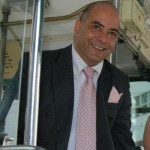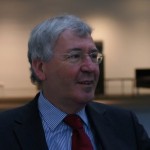Entering the Financial Markets Data environment – Review Screen Market Event
| 12-10-2017 | Pieter de Kiewit |
 Last Tuesday Screen Consultants organized her annual event for the 25th time. An excellent opportunity to put the topic of financial market data on the treasuryXL agenda trough layman’s eyes.
Last Tuesday Screen Consultants organized her annual event for the 25th time. An excellent opportunity to put the topic of financial market data on the treasuryXL agenda trough layman’s eyes.
There are a few obvious reasons why a corporate treasurer should pay attention to market data:
- “Using old market data is like betting on a horse after the race is run”. Buying currencies and commodities without up-to-date market knowledge is burning money;
- Accurate market data is essential in proper bookkeeping, especially in the current regulatory framework;
- Information is one of the essential components in the pricing of financial products;
- Knowing about the various developments influencing markets will help you create a strategy. This applies to hedging, investments but of course for the company as a whole.
With this in mind I entered the event, expecting a very dominant presence of Thomson Reuters, Bloomberg, VDW, Morningstar, Moody’s and similar firms. I did not see them but was offered a fragmented, diversified group of companies and that reminded me of the European Fintech Awards. Bear in mind: the event’s main audience are financial service providers like asset managers. Corporate treasury is for most of the providers a small portion of their client portfolio at best. Especially for the treasury with substantial excess cash, commodity traders and other heavy users going to this event will be inspiring.
For me in many of the parallel sessions, there was most to be learned. These are a few of the eye-openers I would like to share with you. “Market data is in the top 3 cost drivers at financial service providers”, “the margins of providers did not suffer under the crisis and are relatively high”, “Regulatory changes like Mifid2 will have a huge impact on the industry”. The sessions made clear that investing in understanding how markets work before you acquire data is essential. An example that stood out is the impact analyst reports have on markets, regardless the quality of their research.
I want to conclude with two questions. First, tell us about your experience in this field, perhaps the treasuryXL readers deserve more (blogs). Second, experts in this field working in financial services are being trained and certified. I think the full training would be too much but perhaps we can ask partners to develop a tailor made corporate program. As the users know, a data terminal is easily €2,000/month. The type of investments should be managed by knowledgeable staff.
Thank you for your replies,

Pieter de Kiewit
Owner Treasurer Search


 Eind deze maand stuurt de AFM weer een voortgangsrapportage inzake de uitvoering van het Uniform Herstelkader Rentederivaten naar de Tweede Kamer. Volgens berichtgeving vorige week in het FD zal daar in staan dat de banken vrijwel geen voortgang geboekt hebben. Het blijkt dat “van de bijna 20.000 gedupeerde MKB’ers er slechts een handjevol een schadevergoeding heeft gekregen en pas enkele tientallen een voorstel voor schadevergoeding[1]”
Eind deze maand stuurt de AFM weer een voortgangsrapportage inzake de uitvoering van het Uniform Herstelkader Rentederivaten naar de Tweede Kamer. Volgens berichtgeving vorige week in het FD zal daar in staan dat de banken vrijwel geen voortgang geboekt hebben. Het blijkt dat “van de bijna 20.000 gedupeerde MKB’ers er slechts een handjevol een schadevergoeding heeft gekregen en pas enkele tientallen een voorstel voor schadevergoeding[1]”
 TIS and 2FX Treasury organize a webinar that we would like to bring to your attention. On October 19th between 04:00 and 04:45 PM TIS and 2FX Treasury will host: Corporate Payments Optimization: How to reduce complexity in your business. An interesting session for treasury professionals.
TIS and 2FX Treasury organize a webinar that we would like to bring to your attention. On October 19th between 04:00 and 04:45 PM TIS and 2FX Treasury will host: Corporate Payments Optimization: How to reduce complexity in your business. An interesting session for treasury professionals. 

 The Indian rupee has suffered in September severely. In our report we name the issues resulting to the weakening. International companies in India and those trading with India face severe danger from these currency moves. This article will give you an insight how to handle this.
The Indian rupee has suffered in September severely. In our report we name the issues resulting to the weakening. International companies in India and those trading with India face severe danger from these currency moves. This article will give you an insight how to handle this.
 One of the hottest – and also one of the most controversial – things in the crypto currency environment are so-called Initial Coin Offerings or ICOs. ICOs, which employ the use of crypto currencies, have become a popular means of fundraising for start-ups in recent months. The increasing need of blockchain technology and the lack of regulation allows them to raise money quickly in return to so-called tokens (also described as digital certificates). This hype has driven a steep rise in this sector’s market value, reaching a high of $177 bn.
One of the hottest – and also one of the most controversial – things in the crypto currency environment are so-called Initial Coin Offerings or ICOs. ICOs, which employ the use of crypto currencies, have become a popular means of fundraising for start-ups in recent months. The increasing need of blockchain technology and the lack of regulation allows them to raise money quickly in return to so-called tokens (also described as digital certificates). This hype has driven a steep rise in this sector’s market value, reaching a high of $177 bn.

 Do you run a business in Europe and the world is your market? Then you must face jitters due to the currency developments in the US and UK. The huge impact of Brexit on the sterling has seen a devaluation of around 30% against the Euro. The US dollar has weakened some 15% compared to early 2017.
Do you run a business in Europe and the world is your market? Then you must face jitters due to the currency developments in the US and UK. The huge impact of Brexit on the sterling has seen a devaluation of around 30% against the Euro. The US dollar has weakened some 15% compared to early 2017.

